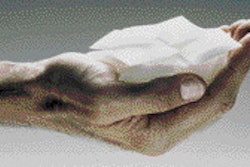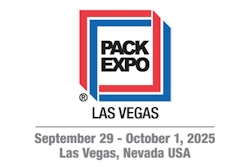"It's a sign of the overall strength of the machine vision industry that it was able to grow in 1998 despite cutbacks by its largest customers," says Jeffrey A. Burnstein, executive director of AIA. The North American market grew 2.6% to $1.58 billion last year on a whopping 22.7% increase in unit sales. Unit sales in North America have tripled over the past few years, while revenues have more than doubled, says Burnstein. The emphasis on lower-cost systems, the report notes, is especially true in packaging applications, where manufacturers are finding less-costly, less-sophisticated products that perform the same functions (for an example, see Davlyn story, p. 108).
In its analysis of the marketplace in North America, machine vision is increasingly used in many packaging-related areas, from container manufacturing to food, electronics, pharmaceutical and medical device packaging.
"We expect the next several years to show continued growth. . . Many manufacturing trends are in our favor," Burnstein says. "Customers in every manufacturing industry demand 'cheaper, faster and better' products. Product lifecycles are shorter than ever, components are getting smaller. . ." All of these factors, Burnstein says, favor increased use of vision technologies.
One of the factors contributing to sizable unit sales with only modest gains in dollar revenues has been price declines. In North America, the average price of a machine vision system in '98 was $39꺜. The study says this reflects an increase in the numbers of systems sold with host-based processing and simple frame grabbers, as well as the sale of less expensive "smart camera-based" systems. Applications of intelligent X-ray and off-line machine vision-based metrology systems are continuing to grow.
Living up to promises
From a technology standpoint, systems are easier to use and becoming more robust, the survey says, finally living up to the promises first projected a decade ago. Meanwhile, the continuing emphasis on quality improvement (ISO 9000 and Six sigma), coupled with the search for productivity gains, is making mechanization a more attractive alternative to human inspection. And a not-so-subtle endorsement of machine vision inspection by the U.S. Food & Drug Administration hasn't hurt either.
The survey projects that pharmaceutical manufacturers will buy an average of 11.2% more units each year, with total sales up 10.8%. While application-specific systems have been available for a number of years, this market is still small.
However, a family of application-specific products has been developed to inspect filled and unfilled vials and ampules. For the latter, the application is analogous to inspection systems for empty glass containers. This inspection is critical to find weaknesses in containers that may be used to hold body fluids that may be diseased, because breakage could cause contamination to the medical professional handling the container. And litigation associated with contamination can be substantial.
Inspection after filling is done to assure no contamination in the product and to assure correct closure placement and seals. This inspection can also check for damage to the glassware in handling or stopper insertion.
Inspection is also being performed on solid-dose products, in some cases to sense subtle differences in product color. Other systems inspect for dosage presence and completeness in slat counters as well as for blister- or bubble-pack operations. For some birth control tablets, not only is presence and completeness essential, but specific color in a certain location also must be verified.
Downstream, machine vision systems are used for "proofreading" labels and patient inserts/outserts, so that text agrees with reference and the number of pieces are verified. This application is important because the FDA requires an accurate reconciliation of products filled vs labels and inserts used.
In these functions, some makers of general-purpose vision systems can offer application-specific products. Most of these provide a simple way, with minimal system integration, to adapt the system to an application like checking date and lot codes. In these cases, the study reports, a graphical user interface addresses the application and involves a "train-by-showing" program that prompts an operator step-by-step through set-up.
New opportunities, competition
The survey does explain that certain application-specific machine vision systems for the pharmaceutical industry have been expected, but they have not yet been put into operation. One is an inspection of a mark or logo on tablets or other solid dosages immediately after imprinting, and another is a more rigorous inspection for discoloration or other appearance features. These systems, the authors speculate, may be absent because of increased exports to Japan, where, the report says, consumers are more demanding.
In other packaging applications, however, machine vision is finding increased competition from simpler photoelectric sensors that can be more cost-effectively configured to perform single functions like verifying cotton or cap presence. Less-costly high-speed checkweighers are often used to verify that package contents are both present and correct by weight. And finally, label security can be checked using less-costly bar-code scanners.
These alternatives help to illuminate one of the main obstacles of machine vision systems: total cost of installation. Demand for turnkey systems raises costs, and validation and maintenance of a challenge procedure to verify operation can be expensive. This is borne out by what the study calculates as the average price of $347ꯠ for application-specific vision systems. However, based on AIA figures, this figure is considerably lower than the average a year earlier ($684ꯠ).
Bright outlook
The pharmaceutical industry is growing, thanks to the ongoing development of new products and the "aging" of the population. This aging historically causes increased consumption of drugs, and this driver, the study says, should continue for several more years.
As promising as this is, new product development doesn't automatically mean new packaging lines or equipment. In fact, the study sees continued consolidation among pharmaceutical companies, which could mean fewer production lines required and planned. On the other hand, larger companies usually have more capital to invest in high-technology equipment like machine vision systems.
Other factors encouraging to makers of machine vision include more outsourcing, selling through managed-care organizations and changes in drug delivery systems. By next year, the report states, there are some estimates that half the technical jobs in pharmaceutical packaging will not be permanent, full-time jobs because of outsourcing.
More direct sales of drugs through larger healthcare companies may mean major changes in the way drugs are packaged. And as patents on formulations expire, another trend is to convert from ethical drug products to over-the-counter versions. This may make packaging even more important and increase the need for machine vision systems.
Finally, the same issue of patent expirations has caused makers to develop new drug delivery systems. Sustained release and controlled dissolution technologies add value to products no longer covered by patents. In addition, transdermal patches, inhalation systems, electronic transport of drugs through the skin and even implantable devices are all technologies that are changing the way patients receive medications.
These changes, the report says, bode well for continued capitalization in pharmaceutical production and packaging. This should also sustain growth in machine vision systems.
Food growth to be slow
The major share of applications of machine vision in the food business involves systems designed to help sort and select prime harvested foods from those with defects. However, as the report states, some of these belt sorters designed to discriminate by color have made the shift from the food business to other applications in the paper business, plastics recycling and for reconstituted board in the wood products industry.
Other applications in food involve automatic portioning systems for seafood, poultry and other meats, which employ water-jet cutters that use three-dimensional machine vision to calculate volume. These cutting systems could, over time, replace factory meat and seafood cutters. Of more interest to food packaging professionals, X-ray-based vision systems are used to find foreign objects in products (i.e., bone in chicken or hamburger patties or glass in food jars).
The food industry, as much as any, tends to use general-purpose machine vision systems or even smart-camera-based systems for typical packaging and cartoning applications, like label verification, cap presence/alignment, container integrity, fill verification and other standard quality-control checks.
Overall, vision systems for the food industry have been trending upward over the last few years, reaching 479 units valued at $77.7 million last year. This should continue over the next few years, as new applications emerge. Among drivers, the report sees increasing use of glass packaging in response to consumer interest in nostalgia. That will require more emphasis on assuring the product and the container are both safe and attractive.
On the negative side, the food business is typically perceived as a technological laggard, the report states. Even companies willing to be pioneers in the adoption of new technologies rarely have the infrastructure in place to support the technologies. Meanwhile, the larger companies with the technical infrastructure in place typically are reluctant to become technology pioneers. Larger companies rarely calculate the rewards of new technology to be commensurate with its risks to management, profit and stock value.
Still, virtually every segment of the major businesses that use machine vision for packaging-related applications expect growth over the coming years.



























